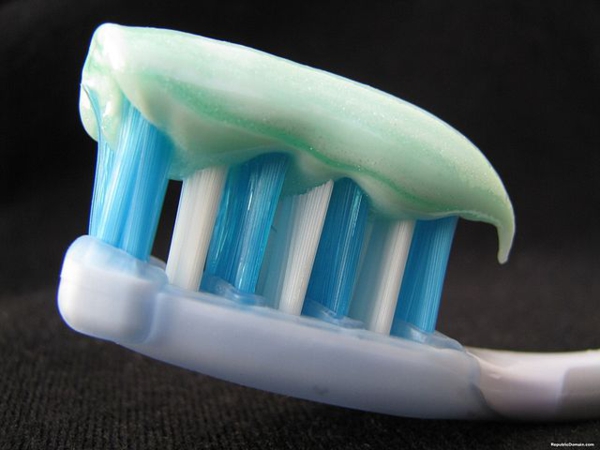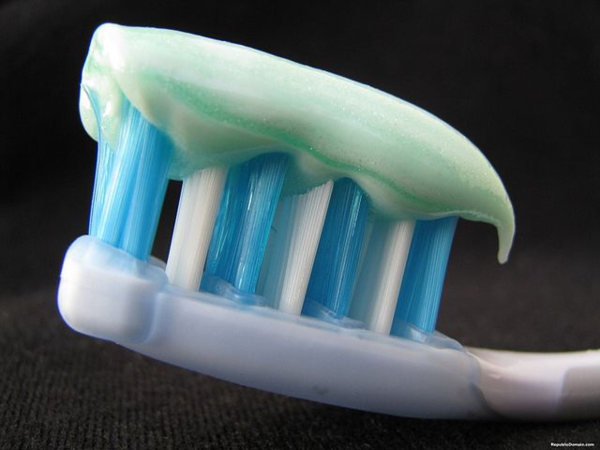Health
Dealing With A Dirty Mouth: How To Select The Right Toothpaste

When it comes to protecting the health of your teeth and gums, no habit plays a more important role than brushing. Of course brushing without toothpaste would be like trying to fly a kite without a string, so you need to carefully select the right brand that best meets your oral health needs.
With an overwhelming number of options out on the market, how do you select the brand for you? Do you select a brand that features tartar control or additional fluoride protection? Do brands that brighten the color of your teeth also protect from the development of gum disease and tooth decay, and when should you switch to a brand designed to help sensitive teeth? Here’s what you need to know the next time you decide which brand of toothpaste to place in your grocery cart.

The Basics
Your basic, run of the mill toothpaste comes in paste, gel, and powder forms. Regardless of how a toothpaste is packaged, there are a few common ingredients that just about every brand contains. These include:
- Abrasive agents. To thoroughly clean your teeth, toothpaste needs to contain scratchy agents, such as silicates or calcium carbonate, that provide an abrasive edge to remove bacteria and foods particles. Without these types of abrasive agents, toothpaste wouldn’t be able to provide as deep a cleaning.
- Flavoring. Because ingredients like fluoride and calcium carbonate don’t taste very good on their own, toothpaste manufacturers add artificial sweeteners to toothpaste to improve the flavor. While most people associate mint with the flavor of toothpaste, a variety of brands come in such flavors as lemon-lime, cinnamon, and even bubblegum.
- Humectants. An anti-drying agent, humectants are used to keep toothpaste from drying out in the tube.
- Thickeners. To provide toothpaste a firm enough texture to keep it from running off your brush, a thickening agent is added that usually includes gum and gooey molecules found in seaweed.
- Detergents. You can’t kill bacteria without soap, so toothpaste contains some type of detergent, such as sodium lauryl sulfate, which helps clean your teeth, while causing suds to appear.
Fluoride Toothpaste
By far the most important ingredient in any toothpaste you purchase, fluoride is a naturally occurring mineral that plays a vital role in protecting your teeth from tooth decay. Since fluoride was first added to the nation’s water supply and became a common ingredient in toothpaste, the number of cavities reported in the U.S. has dropped dramatically over the last 50 years.
Plaque, a sticky film of bacteria that lives in your mouth, feeds on the sugars you consume to produce acids that slowly eat away at tooth enamel. Fluoride provides your teeth with some protection from plaque acids by making tooth enamel stronger, and by helping to remineralize areas of your teeth that have begun to decay. Any brand of toothpaste you purchase should include fluoride. If suffer frequently from cavities, you might consider purchasing a brand that advertises as containing extra fluoride protection.
Tartar Control Toothpaste
The primary reason you brush is to remove plaque and lingering food particles from your teeth. By failing to brush, or by not brushing properly, you leave plaque on your teeth where it starts to harden into tartar. When tartar begins to accumulate along the gum line of your mouth, the bacteria makes cleaning your teeth more difficult and brushing less effective. Eventually, tartar will harden to the point that only your dentist can remove it from your teeth, which is why you should schedule regular cleanings every six months.
Tartar control toothpaste contains active ingredients that help to prevent plaque from hardening into tartar. These ingredients include such compounds as pyrophosphates and zinc citrate, and occasionally antibiotics like triclosan that kill mouth bacteria. Tartar control toothpastes are best suited for individuals who don’t receive regular dental cleanings or who suffer from gum disease.
Sensitive Teeth Toothpaste
If consuming hot or cold foods and drinks cause you to experience sharp pangs of pain, you probably suffer from sensitive teeth. This condition occurs when your gums begin to recede away from the base of your teeth, thereby exposing the sensitive tubules that run into the nerve center of a tooth. When hot or cold stimuli irritate these tubules, they cause you to experience pain.
Toothpaste for sensitive teeth contain ingredients like potassium nitrate and strontium chloride that block the pathways in tubules that travel to the nerve center of a tooth. While effective, these types of toothpaste generally take several weeks of use before they begin to offer relief. If you suffer from extreme tooth sensitivity, you may consider using this type of toothpaste, which is generally lighter and less abrasive than tartar control brands.
Whitening Toothpaste
Few aspects of a person’s appearance make as noticeable a difference as a mouthful of pearly white teeth. Because everyone wants a brilliantly white smile, a number of brands have hit the market that offer to clean and whiten teeth. These types of toothpastes generally contain some type of peroxide, and a variety of abrasive agents that work to polish teeth and remove stains. While studies have shown that the extra abrasive agents used in whitening toothpaste don’t damage tooth enamel, these brands are known to increase tooth sensitivity, and should be avoided by those who suffer from the condition.
A freelance writer, Timothy Lemke blogs about oral health for Dr. Derrik Stark, a dentist in Ridgefield, WA at Smiles Dental.
-

 Tech11 years ago
Tech11 years agoCreating An e-Commerce Website
-

 Tech11 years ago
Tech11 years agoDesign Template Guidelines For Mobile Apps
-

 Business6 years ago
Business6 years agoWhat Is AdsSupply? A Comprehensive Review
-

 Business10 years ago
Business10 years agoThe Key Types Of Brochure Printing Services
-

 Tech8 years ago
Tech8 years agoWhen To Send Your Bulk Messages?
-

 Tech5 years ago
Tech5 years ago5 Link Building Strategies You Can Apply For Local SEO
-

 Law5 years ago
Law5 years agoHow Can A Divorce Lawyer Help You Get Through Divorce?
-

 Home Improvement6 years ago
Home Improvement6 years agoHоw tо Kеер Antѕ Out оf Yоur Kitсhеn































